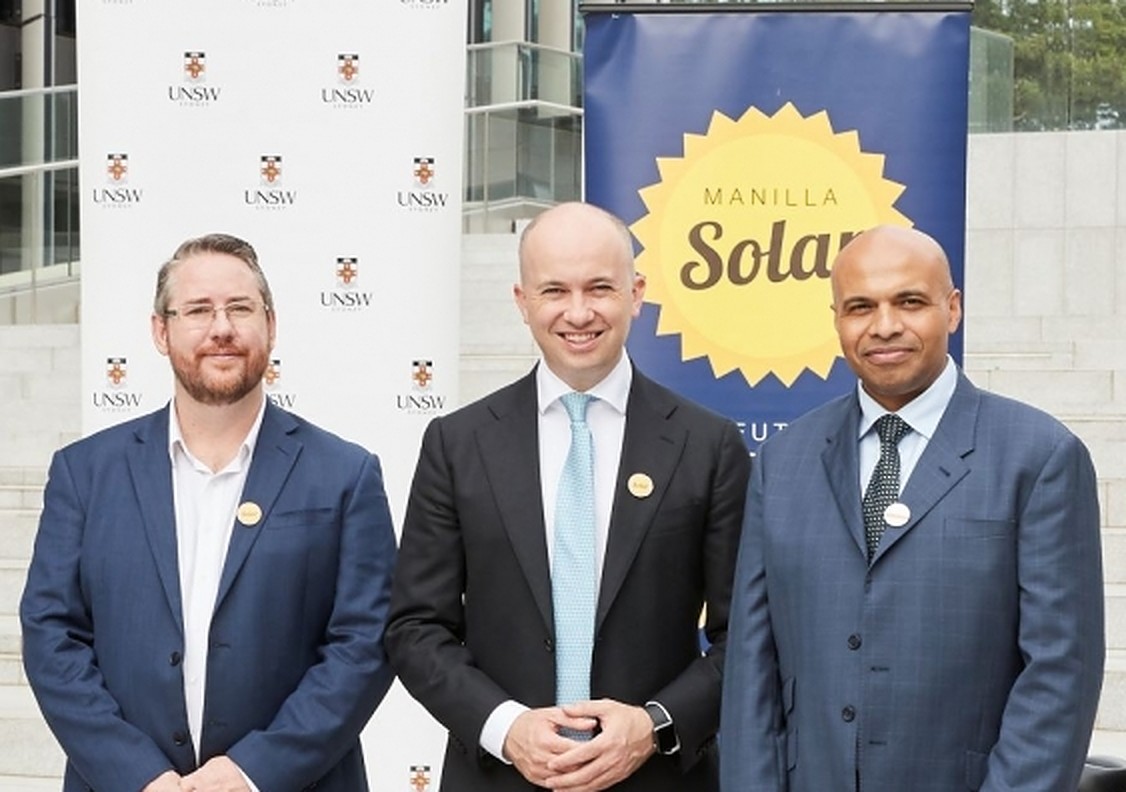More than $15 million in funding from the state government’s Regional Community Energy Fund was announced on Tuesday to help regional communities in New South Wales (NSW) take control of their energy bills and benefit from the economic opportunities presented by the energy transition. The awarded projects will unlock nearly 17.2 MW in electricity generation and up to 17.9 MW/39.3 MWh of energy storage, leveraging approximately $36 million in private investment.
Six projects will install solar, four of which will collocate battery storage on site, and one will deliver a shared community battery scheme. The list of approved projects includes 5 MW Bayron Bay Solar Farm alongside a 5 MW / 10MWh DC-coupled battery; 500 kW Gloucester Community Solar Farm; the Goulburn Community Dispatchable Solar Farm involving 1.2 MW of solar PV and 400 kW / 800 kWh of battery storage; 1 MW Haystack Solar Garden; Orange Community Renewable Energy Park with a 5 MW solar farm and up to 5 MW / 5 MWh of battery storage; and a 1 MW / 2MWh battery, which will be installed under Enova Community’s Shared Community Battery Scheme for regional NSW.
A project that stands out in the group for its combination of on-site renewable energy technologies is the Manilla Community Solar. The development will feature 4.5 MW of solar PV, 4.5 MW / 4.5MWh of battery storage and a 2 MW /17 MWh hydrogen energy storage system. It will be backed by a $3.5 million grant that has been awarded to the Manilla Solar Project, a partnership between Manilla Community Renewable Energy and green investment outfit Providence Asset Group.
Plans for the Manilla solar farm were announced in December as one of the first of up to 30 community solar initiatives to be rolled out across regional Australia. On Tuesday, it was confirmed that the development will feature an advanced hybrid battery storage system in addition to the solar and battery storage components. According to UNSW, solid-state hydrogen technology will be installed in 20-foot containers with an energy density of 17 MWh and will be a first of this kind in the world in terms of scale.
New generation of batteries
The technology was first unveiled last March when a team of researchers at UNSW headed by Professor Kondo-Francois Aguey-Zinsou said they had developed a unique system that allowed for cheap storage and transportation of hydrogen and could provide a new alternative for energy storage within two years.
Their research, conducted in partnership with H2Store, had been underpinned with $3.5 million in backing from Providence Asset Group. The funding was intended to help the team deliver phase one of a four-stage project that includes the creation of prototypes of their hydrogen energy storage solution for residential and commercial use, demonstration units, and testing and optimization that will enable full commercialization of the product.
Speaking about the first phase of the project, Professor Kondo-Francois Aguey-Zinsou said that he believed his invention would offer significant advantages over current power storage solutions for home solar systems, such as the Tesla Powerwall battery.
“We will be able to take energy generated through solar panels and store it as hydrogen in a very dense form, so one major advantage of our hydrogen batteries is that they take up less space and are safer than the lithium-ion batteries used in many homes today,” he said, adding that the system can actually store about seven times more energy than other that are currently available. Other advantages include a lifespan of about 30 years compared with under 10 for other systems and no fire risk.
On Tuesday, Professor Aguey-Zinsou said: “I am very excited to see the technology we developed in the lab here at UNSW scaled up and used in real-world applications. It will prove the feasibility of hydrogen storage at scale and position Australia to become a major player in transitioning to renewable energy.”
Construction will commence on the Manilla Solar Project in the second half of 2020 and is expected to be operational early 2021. The storage component will be installed during 2021.
This content is protected by copyright and may not be reused. If you want to cooperate with us and would like to reuse some of our content, please contact: editors@pv-magazine.com.









By submitting this form you agree to pv magazine using your data for the purposes of publishing your comment.
Your personal data will only be disclosed or otherwise transmitted to third parties for the purposes of spam filtering or if this is necessary for technical maintenance of the website. Any other transfer to third parties will not take place unless this is justified on the basis of applicable data protection regulations or if pv magazine is legally obliged to do so.
You may revoke this consent at any time with effect for the future, in which case your personal data will be deleted immediately. Otherwise, your data will be deleted if pv magazine has processed your request or the purpose of data storage is fulfilled.
Further information on data privacy can be found in our Data Protection Policy.